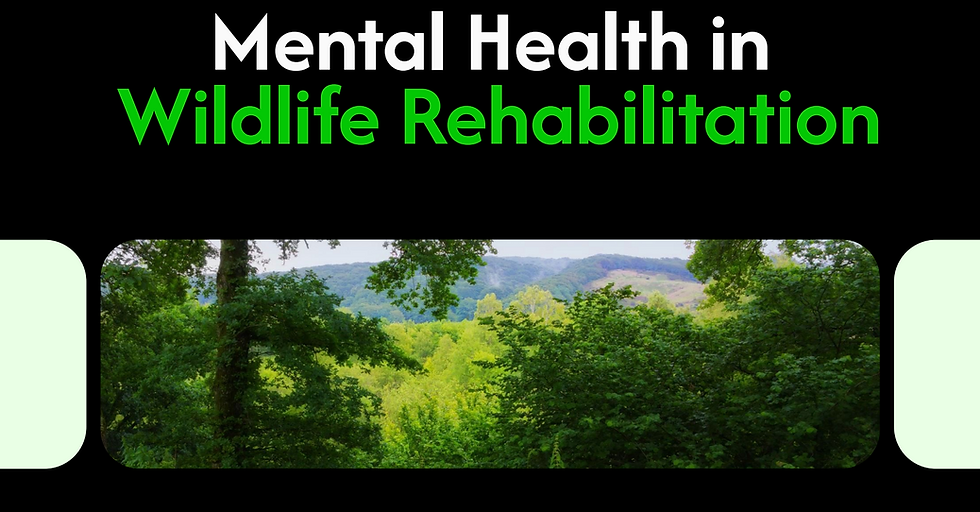What is triage, and why is it important
- WReNNZ

- Oct 30, 2023
- 2 min read

Kereru and Yellow-crowned parakeet - Photo Credit Pauline Nijman
Triage is the process of classifying patients according to the severity of their condition and the urgency of their treatment. Triage is used in many settings, such as human hospitals and natural disasters, to prioritise allocating limited resources and ensure that the most critical cases receive immediate attention.
In a wildlife rescue centre or hospital, triage is also essential for saving the lives of injured, sick, or orphaned animals. Centres often receive a large number of patients, especially during peak seasons such as spring and summer, when many young animals are born and face various threats from predators, diseases, or human activities. Wildlife centres also have to deal with emergencies such as oil spills, wildfires, or flood incidents, which can overwhelm their capacity and resources.
Triage helps wildlife centres to assess each animal's condition and determine the best course of action. Some animals may need surgery, intensive care, or specialised treatment, while others may only need minor interventions, such as wound cleaning, medication, or hydration. Some animals may be too severely injured or ill to recover and need to be euthanised humanely to prevent further suffering.
Triage also helps wildlife hospitals achieve their ultimate goal: to rehabilitate and release the animals back into their natural habitats. By identifying the animals with the highest chance of survival and recovery, triage ensures that the resources and efforts of the wildlife rehabbers or vets are not wasted on hopeless cases. Triage also helps monitor each animal's progress and decide when they are ready to be released or transferred to another facility.
Triage is not an easy task. It requires skill, knowledge, experience, and compassion. It also involves making difficult decisions that may affect the life or death of an animal. Triage can be emotionally challenging and stressful for the team, who must balance their empathy for the animals with their professional judgment.
A wildlife hospital may use different triage methods, depending on the type and number of animals that are admitted. Some common methods are:
The simple triage and rapid treatment (START) method assigns patients to one of four categories: immediate, delayed, minimal, or expectant. This method is helpful for mass casualty incidents, such as oil spills or wildfires, where many animals are affected at once.
The Modified Glasgow Coma Scale (MGCS) assesses patients' level of consciousness based on their eye, verbal, and motor responses. This method is useful for head trauma cases, such as bird collisions or vehicle accidents.
The triage emergency severity score (TESS) evaluates patients' vital signs, such as heart rate, respiratory rate, temperature, and mucous membrane colour. This method is useful for general medical cases, such as poisoning, infection, or dehydration.
Triage is a vital part of wildlife conservation. It helps wildlife centres and hospitals provide the best possible care for their patients and contribute to biodiversity protection and restoration. Wildlife centres can make a difference for individual animals and entire species by triaging their patients. It also helps reduce stress and suffering for animals and humans involved in wildlife rescue and care.
This article was written by
Mandy Robertson
For WReNNZ






Comments